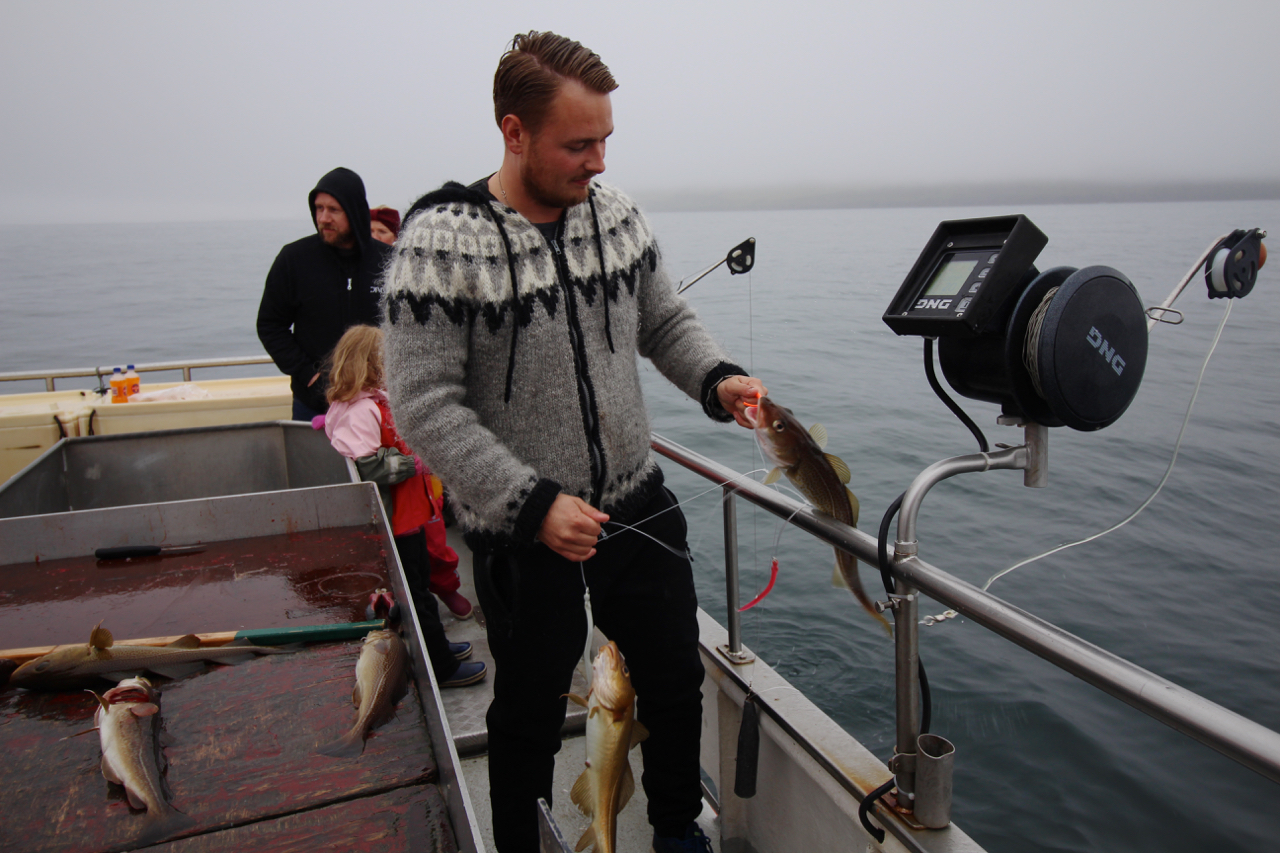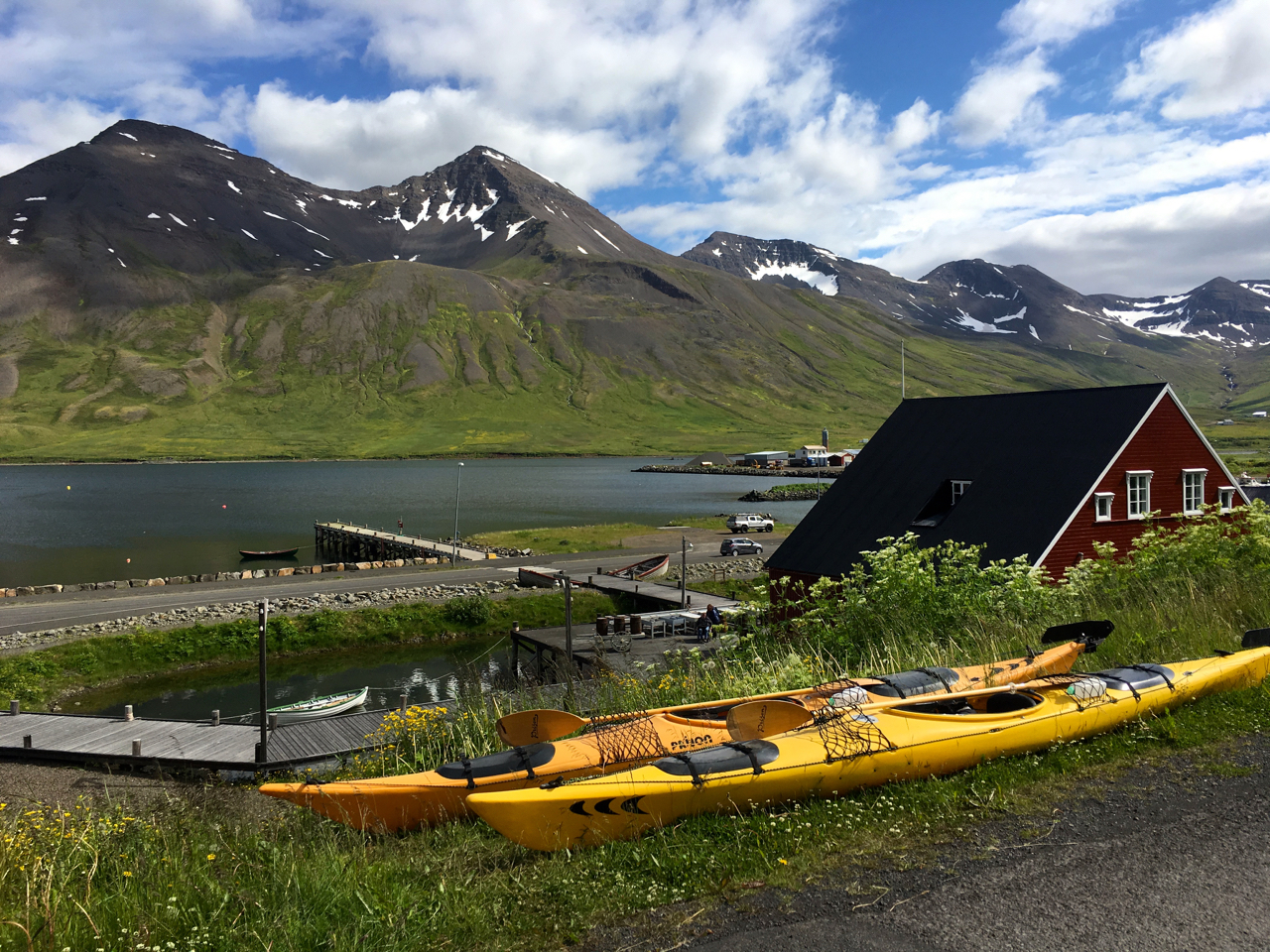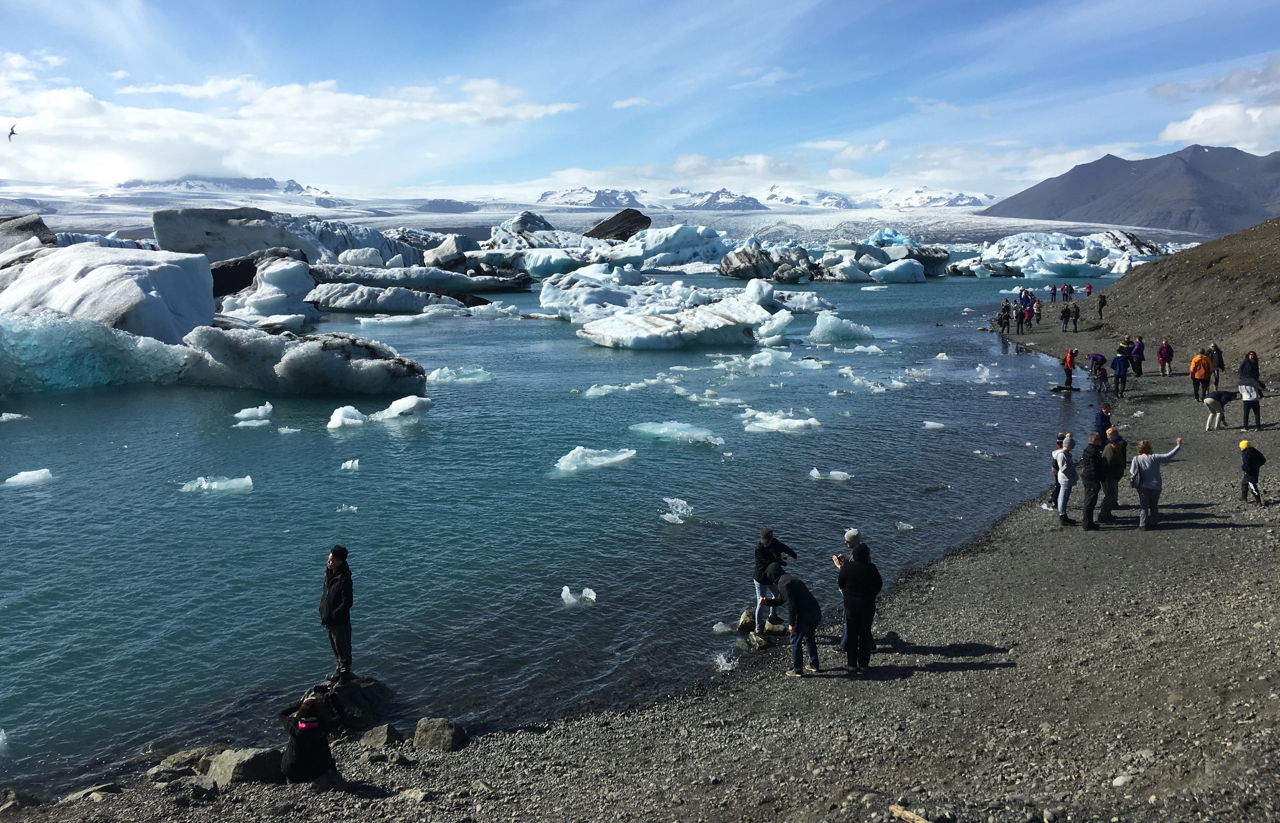Iceland reaps riches from warming oceans as fish swim north

REYKJAVIK — With their shimmering silver bellies and iridescent blue backs, mackerel are striking fish. Sushi aficionados savor their clean, salty taste while superfood advocates prize their healthy omega-3 oils.
For the tiny North Atlantic nation of Iceland, however, mackerel are a harbinger of ocean warming.
Until about 2000, mackerel were a rare sight in Iceland, an island whose people have survived for centuries by fishing. But today they are one of the country’s most commercially important fish, both in terms of value and volume.
In 2016, mackerel was the third largest catch for Iceland and its third-most-valuable fish, bringing in $103 million or 8 percent of the nation’s total catch value.
“This mackerel story is maybe one of the most marked ones… demonstrating the changes taking place in the fish stock in the North Atlantic in recent years,” said Ólafur S. Ástþórsson, a scientist at Reykjavik’s Marine and Freshwater Research Institute (MFRI), which advises the Icelandic government on catch levels.
Rising ocean temperatures have altered fish stocks around Iceland, with southern species migrating northwards and northern species shifting even further north, he told the Thomson Reuters Foundation.
Iceland has also seen 31 new species of fish in its waters since 1996, including blue sharks, flounder, megrims and black devil anglerfish, Ástþórsson said. Their numbers are not large, but “they are signs of changing times,” he added.
SWIMMING NORTH
As climate change brings warmer temperatures in many parts of the world, a growing number of fish species are swimming into new waters, seeking out the temperatures they prefer and shifting fisheries along with them.
Some of the biggest changes have come in Arctic marine ecosystems, which scientists say are warming twice as fast as the global average and creating dramatic changes in fish stocks.
Countries in the far north, such as Iceland, are expected to reap the benefits of climate change, as valuable fish species turn up waters that were previously too cold.

But some experts warn that the picture isn’t clear cut. Warming waters could also bring new predators and diseases – and potentially new geopolitical tensions, they say.
The waters around Iceland have warmed between 1 to 2 degrees Celsius in the last 20 years, said Hreiðar Þór Valtýsson, a professor at the Faculty of Natural Resource Sciences at the University of Akureyri.
Valtýsson’s children can now catch mackerel – a fish usually associated with warmer climes – at the harbor in Akureyri, a town in northern Iceland just 60 km (37 miles) south of the Arctic Circle.
Studies suggest climate change could aid shipping and tourism in northern economies, as well as fishing, but Valtýsson remains unsure.
Cold water species such as northern shrimp and capelin, which are important for Icelandic fisheries, are declining, he said.
Climate change is also increasing the acidity of the world’s oceans as the water absorbs some of the carbon dioxide building up in the atmosphere. That could have serious effects on sea life, including making it harder for shellfish to build strong shells, he said.
New diseases are also appearing and although it is still unclear how much of a factor rising temperatures played, Iceland’s scallop stock has collapsed and there have been mass deaths of herring, Valtýsson said.
“The gains and losses seem to be balanced for now. But in the longer-term, I think it will be slightly positive,” he predicted.
MORE DIVERSE, MORE PROFIT
Fishing was once the largest industry in Iceland, but its share of GDP has been declining as the country’s tourism and energy businesses boom. In 2007, Iceland was ranked 15th among world’s largest fishing nations. By 2014, the country had dropped to 19th.
Still, fisheries remain integral, said Ragnar Arnason, an economics professor at the University of Iceland.
Nearly a tenth of Iceland’s economy is directly related to fishing, and the figure rises to nearly 20 percent if associated industries are taken into account, Arnason said.
Iceland also has long international prestige in fishing, hosting the United Nations University’s fisheries program, which provides postgraduate-level training for professionals in less-developed countries.
That means any change to the country’s fishing industry could substantially affect its $16.7 billion economy, which has now recovered from the painful collapse of its financial industry in 2008.
Icelanders need not fear their favorite fish dishes will disappear from the dinner table soon, however. Most of Iceland’s catch is for export, and favorites can be kept at home, fishermen say.
But the changes do require the industry to be nimble – an ability it is already showing, Icelandic experts say.
Arnason said it took the Icelandic fishing industry just two to four years to fully adapt to the increased supply of mackerel in the country’s 200-mile exclusive economic zone.
But investing in new equipment, divesting the old, and developing new product lines and marketing mechanisms can be costly, he warned.
He believes Iceland’s fishery policy, rooted in individual, transferable quotas given to each fishing boat for each species, gives companies flexibility and makes it easier to earn profits, making adaptation “easier,” he said.
The quota system has been praised for being clear, open, well-policed and based on scientists’ assessments of stocks.
The University of Akureyri’s Valtýsson, however, says the country’s lack of fishing subsidies and Iceland’s natural weather fluctuations are what have most effectively kept the industry on its toes.
“If the fishing industry is diverse and both ecologically and economically sustainable, then it will be able to adapt” – and the government need not intervene, he said.

REGIONAL PHENOMENON
Iceland is hardly alone in seeing changes in its fish stocks.
A November 2016 report by the International Council for the Exploration of the Sea (ICES) analyzed 19 fish species in the North East Atlantic and found all but three showed changes in their distribution.
The report said the main driver for the changes was environmental conditions.
The waters along the west coast of Norway’s Svalbard islands and the Barents Sea also are seeing changes similar to those in Iceland, said Felix Christopher Mark of the Alfred Wegener Institute for Polar and Marine Research in Germany.
A report Mark co-wrote last year found Atlantic cod, a voracious predator, moving north into the habitat of polar cod, which are an important link in the region’s food chain.
“Any change in population size of one or both of these species may therefore have economic consequences together with unpredictable ecological interferences,” the report said.
Similar changes could occur with other fish, including herring, blue whiting and mackerel, which have similar diets.
“There is endless competition in the system,” said Ástþórsson, the MFRI scientist. “If a particular stock is gaining from changing environment then it is likely that someone else is losing.”
Such competition can occur between nations as well. Historical examples abound of nations fighting over fish, including the “cod wars” of the 1950s and 1970s – which led to a naval stand-off between Iceland and Britain – and the Pacific salmon dispute between the United States and Canada in the 1990s.
When Iceland attempted to cash in on a surge of mackerel in its waters in 2009, in the aftermath of its banking crisis, a fight over mackerel quotas broke out with traditional mackerel-fishing nations such as Ireland and Norway. After talks broke down, Iceland set unilateral quotas.
“Situations of this kind, where valuable fish stocks move between fishery jurisdictions … are bound to cause problems around the globe,” Arnason said.
Thomson Reuters Foundation is the charitable arm of Thomson Reuters, covering humanitarian news, women’s rights, corruption and climate change.